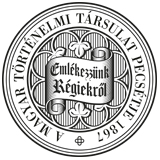Századok – 1991
Tanulmányok - Tüskés Gábor–Knapp Éva: Osztrák–magyar interetnikus kapcsolatok a barokk kori zarándoklatok tükrében V–VI/517
BAROKK KORI ZARÁNDOKLATOK, BÚCSÚJÁRÓ HELYEK 565 to study not only the role and types of outer and inner migration in the 17th and 18th centuries, but also the role of the dynasty, the ecclesiastical and lay leading strata, the city-dwellers, and the various occupational groups and religious organizations. Pilgrimage itself is an outstanding occasion for cultural exchange, very important from the point of view of the meeting of various ethnic and social groups and territories both horizontally and vertically. The cultural phenomena mediated by pilgrimage also play an important intermediate part as reflected by various types of publications, representations, buildings, texts, folklore elements, customs and cults, the local and ecclesiastical characteristics of the places of pilgrimage, as well as the views on pilgrimage changing with the various social layers. In the second half of the 17th and in the first half of the 18th centuries pilgrimage played an important role in the extension of the anti-Reformation and anti-Hirkish policy of the Habsburg dynasty in Hungary, but in the second half of the 18th century — parallel with the differentiation of the attitude towards pilgrimage in the various layers of society — the central restrictions upon pilgrimage brought a fundamental change in the relationship of state and Church and an attempt at restructuring the cultural life of the lower social strata on the part of the social elite as part of an overall process of modernization taking place in various parts of Europe, though at a different pace. The area in question belongs to the zone ranging from southwest to northeast and dividing the Habsburg empire into two, into a central and a peripheral region as regards European culture and economic growth, strengthened by the effect of Vienna as an innovation center. The line divided the more industrial and urban regions of Northwestern Europe and the primarily agrarian ones of Southeastern Europe thus forming one of the major areas where Hungary could contact Western Europe. The analysis of the spheres of attraction of the individual places of pilgrimage reveals how pilgrimage contributes to the creation of cultural centers, to the regional distribution of culture, to the special cultural development of the centers of innovation and the peripheries, as well as to the creation of links between the regions by the transmission, differentiation and equalization of cultural achievements. The places of pilgrimage on ethnically mixed territories contributed primarily to the creation of a regional and religious affinity, to the integration of the various ethnic groups and the solution of inter-ethnic conflicts instead of strengthening ethnic awareness. In the 19th centuiy there could be observed a change in the role of pilgrimage in the ethnic processes. Gábor Tüskés - Éva Knapp RELATIONS INTERETHNIQUES AUTRICHIENNES-HONGROISES DANS LE MIROIR DES PÈLERINAGES DE L'ÉPOQUE BAROQUE (Résumé) Les pèlerinages comme l'une des formes de la migration territoriale — à cause des rencontres périodiques de l'ethnie autrichienne-hongroise — jouaient un rôle important dans la relation des deux cultures et offraient une bonne occasion à étudier le méchanisme de circulation des divers phénomènes culturels, les groupes sociaux intervenants dans l'entremise de ces phénomènes. Les formes différentes de la mobilité disparate des groupes et des couches sociales hétérogènes avaient leur rôle dans la structuration des pélérinages donc au côté du rôle intermédiaire des types de migration intérieur et extérieur de 17-18 siècles on peut démonstrer le rôle intermédiaire du dynastie et celui des milieux cléricaux et civils de la bourgeoisie, de quelques groupes de profession et des associations religieuses. En même temps les pélérinages sont en eux-mêmes des occasions importantes de l'échange culturel et sont les facteurs singificatifs du processus culture] passant entre les diverses ethnies, groupes sociaux verticalement et horizontalement. La majorité des phénomènes culturels — échangée par les pèlerinages — accomplit aussi un rôle important intermédiaire comme il est témoigné par les types de publication de dessins, de bâtiment, des textes, des motifs folcloriques, forme de coutumes et de culte, des spécialités de terrain et de droit canonique des lieux de pélérinage et la conception sur les pèlerinages et le changement de celle-ci de rythme divergeant dans les couches sociales. Dans la deuxième moitié du 17e siècle et dans la première partie du 18e siècle les pélérinages jouaient un rôle important dans la mise en oeuvre de la politique anti-turque — contre reformatrice des Habsbourgs en Hongrie, mais dans la deuxième partie du 18e siècle — parallèlements aux réglements d'État limitants des pèlerinages et la différenciation de la conception sociale des pèlerinages: ces derniers reflètent le changement profond de la relation de 'Église et d'État et l'expérience à renouveler la culture des couches sociales inférieurs de la part de l'élite sociale, ce qui fait la partie du processus global à
